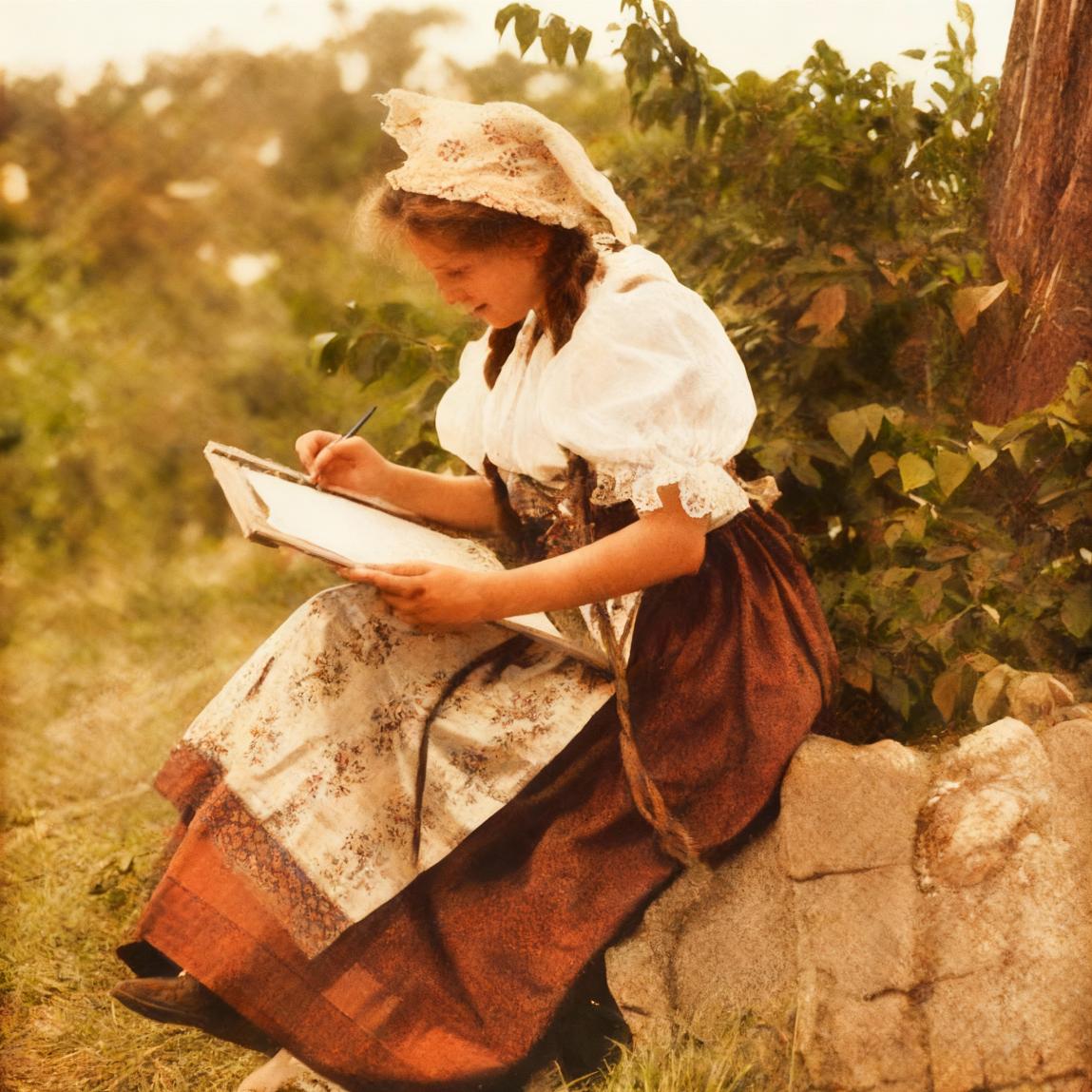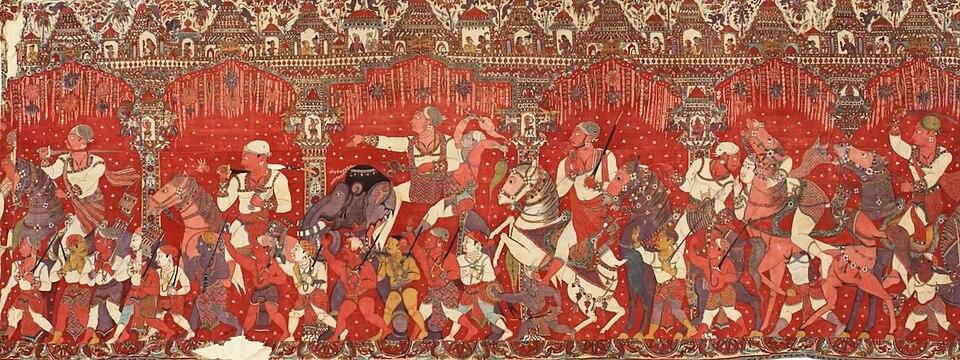
Timelines 10
Man and his Senses 10
Man and his Inventions 10
Geography 10
Fauna 10
Timelines 10
Man and his Senses 10
Man and his Inventions 10
Geography 10
Fauna 10

A small object often tells the largest story: a folded fragment of handloom tucked into a museum drawer, its selvedge still bearing a dye mark, its wear-pattern a map of hands and seasons. In all, that scrap becomes a narrator. Such items, as a block-printed Indian kalamkari fragment, a Czech bobbin-lace panel or an embroidered border from an Indian sari — are the primary documents of textile history, and they show how cloth binds communities, trade routes and memory. Museums on both sides — from India’s rich textile galleries to the Museum of Textile in Česká Skalice and the Museum of Decorative Arts in Prague — collect these small evidences, and together they map a shared human attention to texture, technique and meaning.
India’s textile story is ancient and continuous. Archaeological and textual evidence place cotton spinning in the subcontinent millennia before the Common Era and silk weaving in later classical times. Beyond technique, cloth has always been worn with its own social significance. Courtly muslins, temple brocades, and regional specialities such as Benarasi brocade, Kanchipuram silk, Kantha embroidery, Ikat and block-printing traditions represent a dense cultural archive. These crafts were historically located in specific towns and were in the nature of specialized skills — the perfume of a dye vat in a certain lane or the cadence of a weaver’s shuttle echoed in another family across genealogies. These later became the craft centers compiled and explained in museum collections and trade histories.
In Bohemia and Czech lands the textile story took different technological turns but was equally expressive. Lace-making, folk embroidery, and later industrial weaving and textile manufacture left a durable imprint on local culture and industry. Museums such as the Museum of Textile in Česká Skalice preserve bobbin lace, patterned linens and the machinery of industrial production that tell the story of centuries of local skill and modern mechanization. The Museum of Decorative Arts in Prague holds ornamental textiles and fashion objects that place Czech textile traditions in conversation with broader European currents of design and utility. Together these Czech collections — fastidiously catalogued garments, lace panels and factory implements — function as local memory-banks, preserving techniques and social uses that resonate with Indian forms of material patrimony.
A précis in objects helps: consider a museum drawer in India in Ahmedabad or Calico’s galleries (which house courtly brocades, resist-prints and weavers’ samples) and a display case in Česká Skalice with worked linen and a nineteenth-century bobbin lace collar. One is the residue of handloom economies, linked to and in servitude to the city palace and the main temple by supplying them textiles and garments; the other, being the living trace of household dress and the region's sartorial practices. Both are fabric biographies. These comparative vignettes show that although techniques differ — warp-face vs. weft-faced weaving, shuttle vs. bobbin lace — the cultural function of textiles is analogous: to index identity, ritual and status.
Textiles also map trade and industrial change. India’s handloom sector has long been a major source of livelihood and export; scholarly surveys trace a trajectory from artisanal production to episodes of mechanized challenge and then to renewed interest in handloom’s cultural value. Contemporary research paints a complex picture: while industrial mills and global competition have stressed handloom weavers, domestic and international demand for authentic, artisanal cloth remains a strong countervailing force. Trade papers and research syntheses emphasize the role of regional hubs (textile fairs, clusters around cotton production centres and silk towns) in maintaining skills and channeling exports.
That economic axis reaches into Europe. Export tables and market notes show that cottons, silks and crafted textiles have long been part of India’s trade portfolio; modern trade coverage situates textiles within shifting export strategies and new markets. While the Times of India piece on export realignment focuses on changing geographies of Indian textile export (and the search for alternate markets), the material fact remains: cloth moves — by ship, rail and now air — and with it flows knowledge of finishing techniques, dyeing and quality control. Czech importers and European designers form one of the several ends of that chain, buying raw weaves, specialty fabrics and artisanal cloth pieces for both commercial and museum use.
Preservation is a shared institutional activity. In India the National Handicrafts and Handlooms Museum and city museums conserve looms, patterns and practitioners’ memories; in the Czech lands, decorative art museums and textile museums preserve lace plates, weaving cards and mechanized looms that once powered local economies. These institutions are not mere warehouses; they are active sites of pedagogy and revival — exhibiting, cataloguing, running workshops, and sometimes hosting residencies where contemporary designers learn old techniques. The Sanskriti Museums and other cultural trusts in India as well, act as incubators for reviving techniques, mounting exhibitions that bring artisans and urban publics into direct encounter.

The craft is not without modern trials. India’s handloom sector, while culturally central, faces structural problems: fragmented production, low returns for weavers, competition from mechanized mills and imports, and intermittent policy support. Scholarly literature documents both historical resilience and contemporary vulnerability: the handloom sector’s survival depends on market access, design innovation, social protection for artisans and better supply-chain linkages. In short, the textile heritage must be combined with economic pragmatism: branding, traceability and better returns for weavers if traditions are to be kept alive.
Sustainability is the contemporary thread that joins old practice to new imperatives. Natural fibers and low-energy processes in traditional handlooms offer ecological advantages over synthetic, energy-intensive production. Yet even here tradeoffs exist: the sustainability of sandalwood-stained silks or indigo vats depends on sourcing practices, scale and certification. Both Indian and Czech stakeholders — museums, designers and exporters — increasingly talk about certification, fair trade labeling and traceable provenance as ways to preserve ecological and cultural value while accessing European markets that prize ethical sourcing. Such practices offer a route by which textiles can be both a preserved heritage and a marketable commodity.
Finally, a small archival vignette will closes the pattern: imagine an old invoice folded into a weaver’s notebook. On it: “20 pieces madras checks — shipment to Prague — 12th March 1936.” Folded beside it, a museum accession slip from Česká Skalice records receipt of a lace collar from a Czech farmhouse, dated 1898. These two small pieces of paper — an export invoice and a museum accession note — are the quotidian evidence of the centuries-long exchange. They show how textiles travel not only as commodities but as culture, how cloth carries memory, and how museums and markets together keep that memory in conversation.
Sources:
https://tinyurl.com/nrrx962
https://tinyurl.com/23xlv3n6
https://tinyurl.com/nrrx962
https://tinyurl.com/2c9x7a3e
https://tinyurl.com/235n8bbq
https://tinyurl.com/2yu3wryp
https://tinyurl.com/253aaapo
https://tinyurl.com/2d7f8ftx
https://tinyurl.com/26hjxkj6